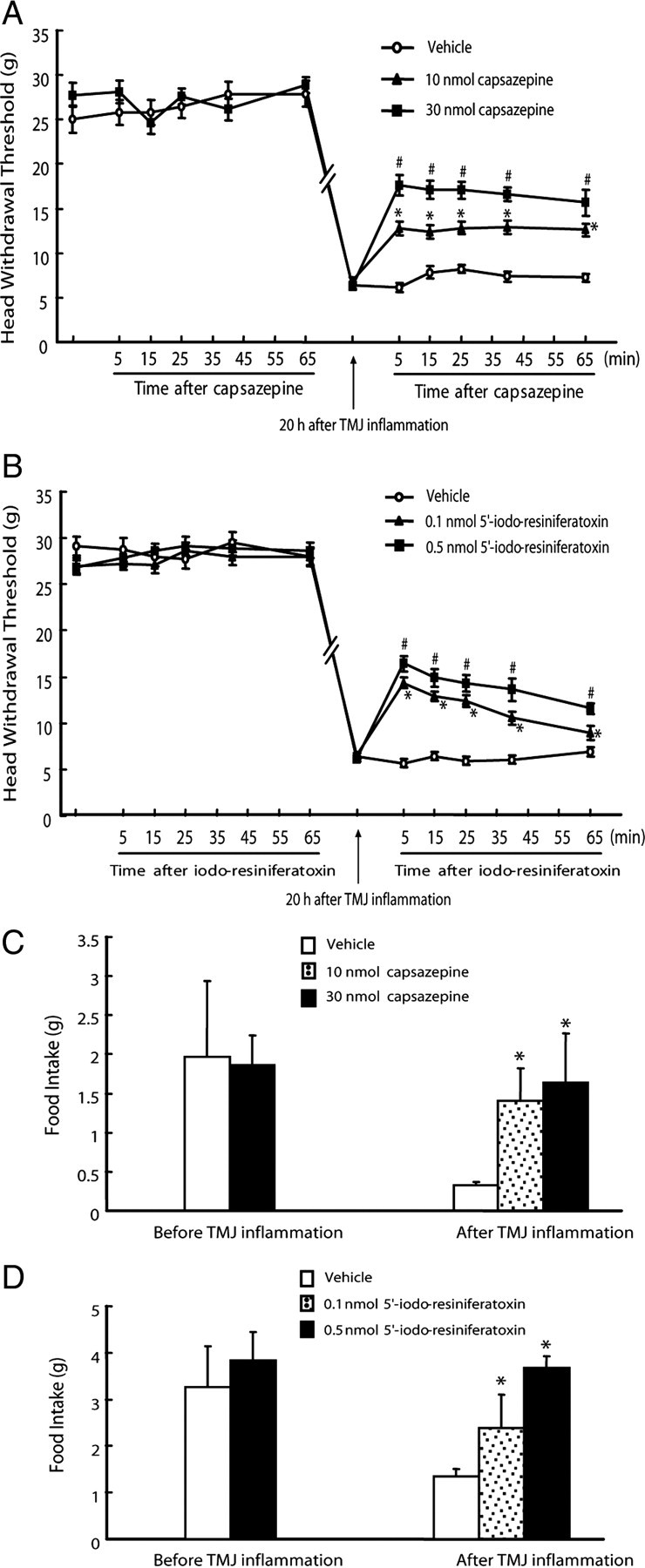Figure 7.

Attenuation of mechanical allodynia of inflamed TMJ by blocking the function of TRPV1 in the hippocampus. A, B, Head withdrawal threshold was partially reversed by intrahippocampal injections of TRPV1 antagonists capsazepine (A) and 5′-iodo-resiniferatoxin (B) into the CA1 region of the hippocampus. The baseline of head withdrawal threshold was not different between intrahippocampal injection of capsazepine (30 nmol, n = 6) and vehicle (n = 5) or 5′-iodo-resiniferatoxin (0.5 nmol, n = 6) and vehicle (n = 6) before induction of TMJ inflammation (p > 0.05). The head withdrawal threshold was dramatically decreased 20 h after induction of TMJ inflammation and was partially reversed by intrahippocampal injection of capsazepine (10 and 30 nmol, n = 4) and 5′-iodo-resiniferatoxin (0.1 and 0.5nmol, n = 4), but not vehicle (n = 3 and 5, respectively). *p < 0.05 versus vehicle group at the same time point; #p < 0.05 versus vehicle group and the group injected with 10 nmol of capsazepine at the same time point (independent-samples t test). C, D, Food intake was improved by intrahippocampal injection of TRPV1 antagonist capsazepine (C) and 5′-iodo-resiniferatoxin (D) into the CA1 region. Food intake was not different between intrahippocampal injection of capsazepine (30 nmol, n = 6) and vehicle (n = 5) or 5′-iodo-resiniferatoxin (0.5 nmol, n = 6) and vehicle (n = 6) before induction of TMJ inflammation. Intrahippocampal injection of capsazepine (10 and 30 nmol, n = 4) and 5′-iodo-resiniferatoxin (0.1 and 0.5 nmol, n = 4), but not vehicle (n = 3 and 5 respectively), blocked the decrease of food intake caused by TMJ inflammation. *p < 0.05 versus vehicle group (independent-samples t test).
